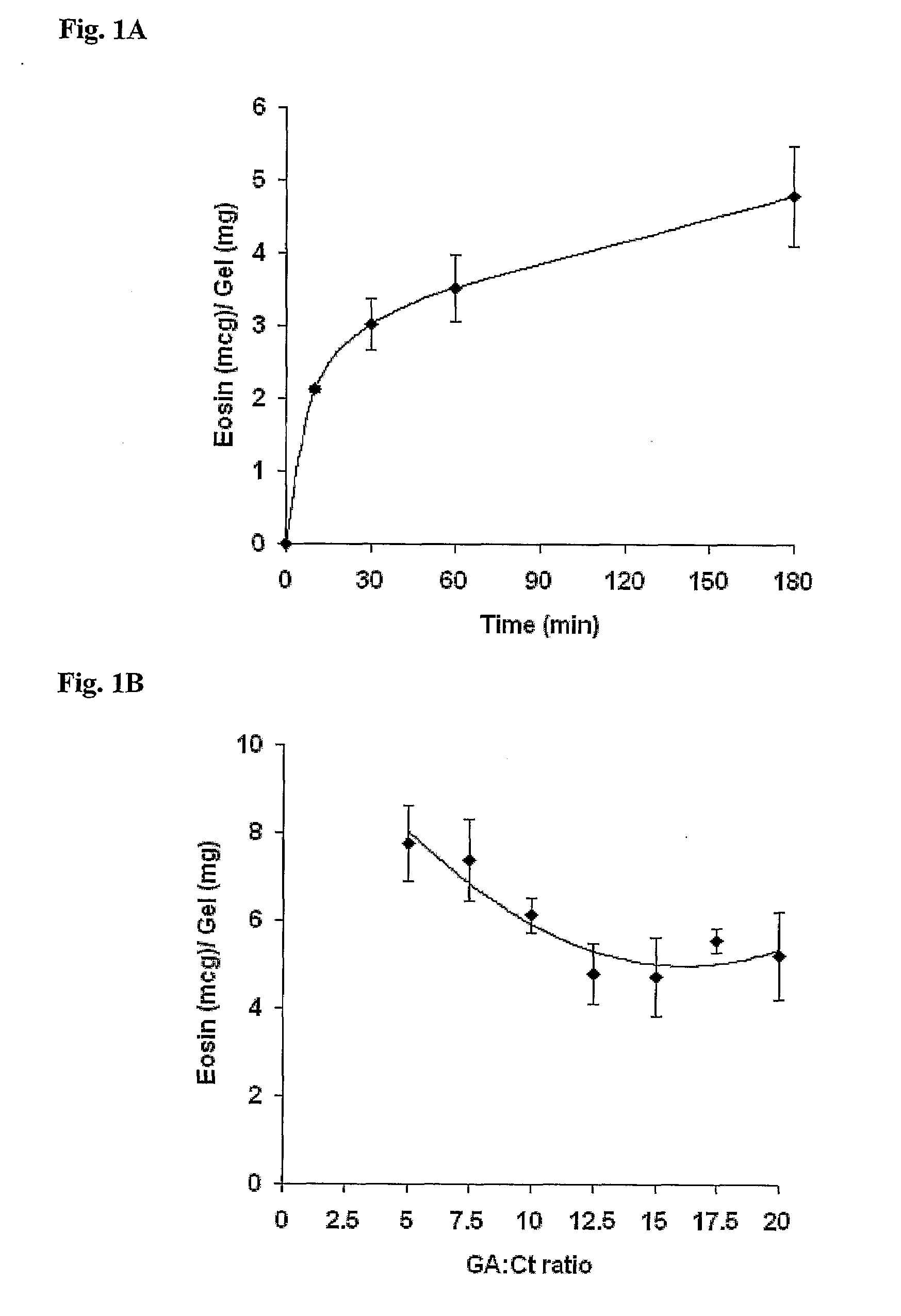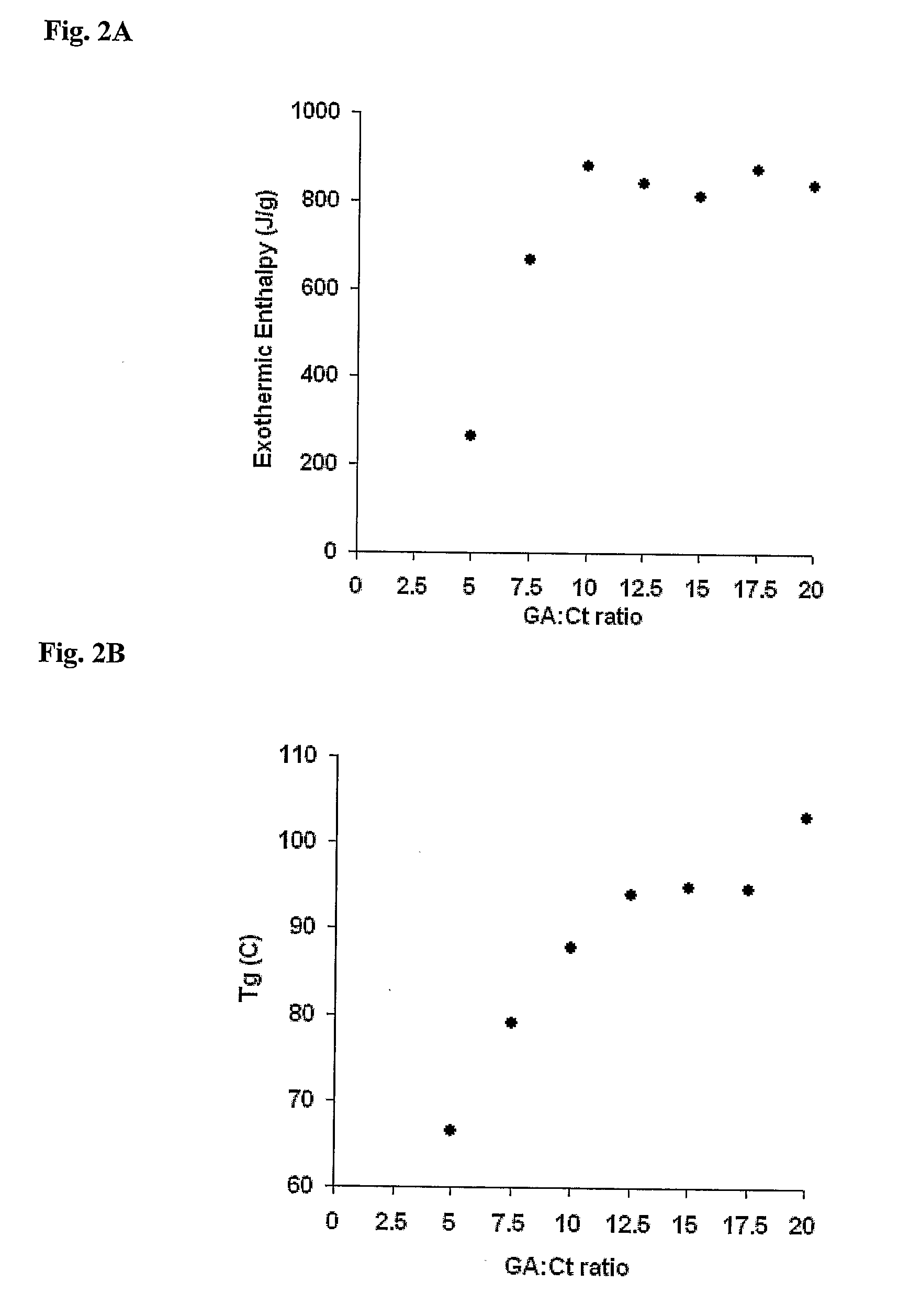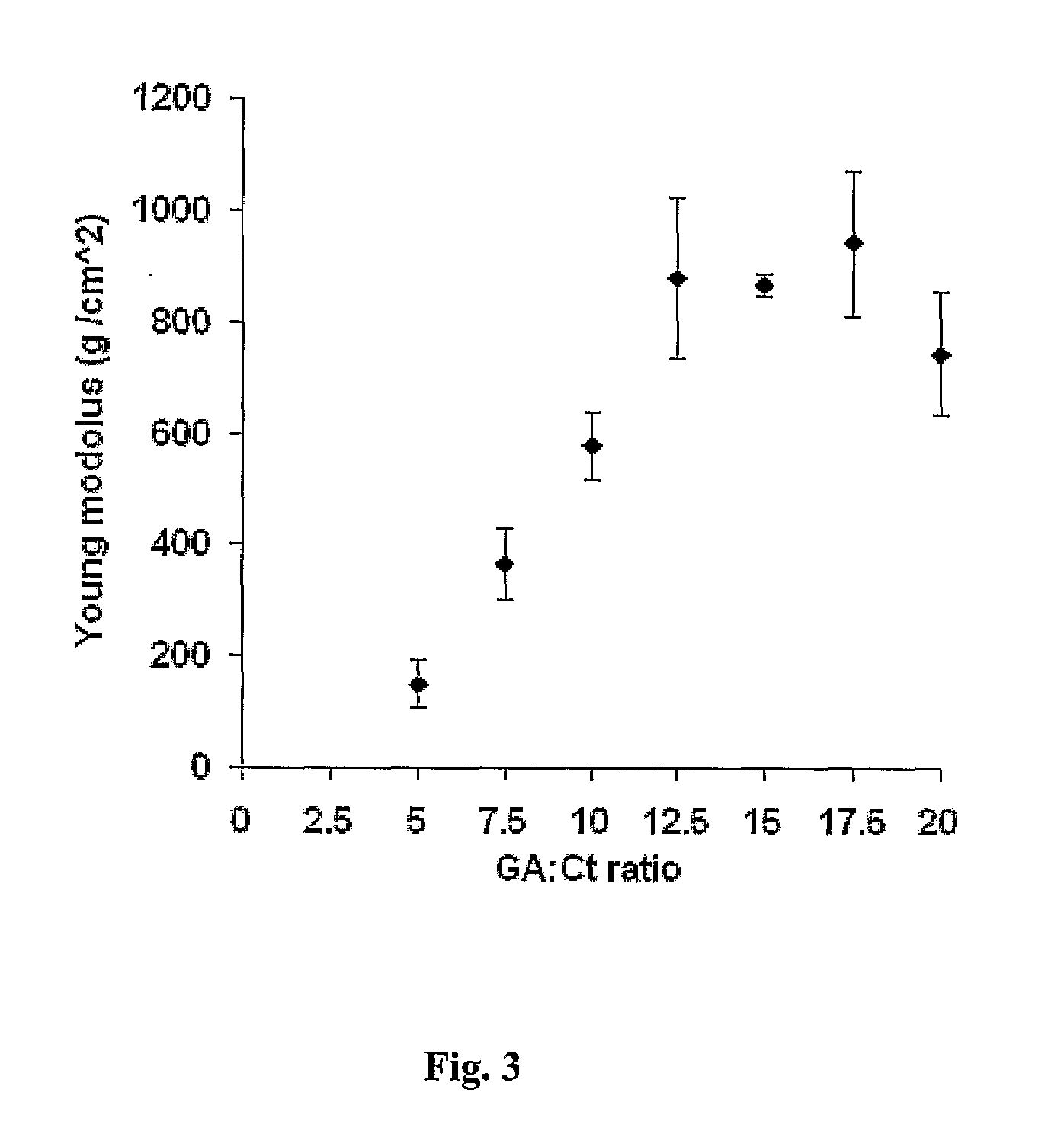Biodegradable composite for internal local radiotherapy
a radiotherapy and composite technology, applied in the field of biodegradable composites for internal local radiotherapy, can solve the problems of serious constraints in the implementation of this therapy regimen, and achieve the effect of removing much of the complexity and discomfor
- Summary
- Abstract
- Description
- Claims
- Application Information
AI Technical Summary
Benefits of technology
Problems solved by technology
Method used
Image
Examples
example 1
Preparation of the Chitosan (Ct) Gels
[0123]One hundred milligrams of Ct was dissolved in 10 ml of 1M acetic acid (Frutarom, Israel), and heated to 100° C. Glutaraldehyde (GA) solution (25% w / v in water) was then added while stirring. A gel was formed immediately and the stirring was stopped. Assuming complete reaction between one molecule of GA and two glucosamine repeating units, the following Ct:GA molar ratios were examined in different studies: 1:5, 1:7.5, 1:10, 1:12.5, 1:15, 1:17.5 and 1:20. These ratios are hereby denoted as G5, G7.5, G10, G12.5, G15, G17.5 and G20 respectively. Excess of GA was removed by dialysis until no traces of GA could be detected at 235 nm (polymeric GA) and 280 nm (monomeric GA) (Uvikon 930, Kontron Instruments, Switzerland) in the rinsing medium.
example 2
Crosslinking Density Characterization
[0124]The crosslinking density of the gels was quantified by adsorption measurements of the negatively charged dye eosin from a hydroalcoholic solution. In different studies about 0.2 g of each gel was incubated in 2 ml of 0.05 mg of eosin in ethanol:water 1:1 solution for 10, 30, 60 and 180 minutes at room temperature. The gels were then removed and the eosin concentration in the incubation medium was measured spectrophotometrically (520 nm), using a six-point calibration curve. The gels were then rinsed with water, dried in acetone (48 hours) and weighed. The amount of eosin adsorbed, which was calculated from the initial and final concentrations in the bathing solution, was normalized to the dry weight of each gel.
[0125]The gels' crosslinking density was also characterized by differential scanning calorimetry (DSC) analysis. The change in heat capacity of the pre-dried gels was measured in a temperature range of 25-175° C., at a rate of 10° C....
example 3
Mechanical Properties Characterization
[0128]Cubic (S-4 mm) specimens from each gel were cut by a scalpel and tested in a texture analyzer (TAXT Plus, Texture Technologies, USA), at a rate of 0.05 mm×sec−1 (compression). Young's modulus of elasticity (E) was calculated using to the following equation:
E=(F / A) / (ΔL / L0) Eq. 1
where F is the tensile force (in gF), A is the cross section area of the specimen (cm2), ΔL is the specimen's strained length (mm) and L0 is the initial length of the gel's specimen (mm).
[0129]The Young Modulus was calculated from the elasticity studies (FIG. 3) and demonstrated that the GA ratio of 12.5:1 was the upper limit of the crosslinking reaction.
PUM
 Login to View More
Login to View More Abstract
Description
Claims
Application Information
 Login to View More
Login to View More - R&D
- Intellectual Property
- Life Sciences
- Materials
- Tech Scout
- Unparalleled Data Quality
- Higher Quality Content
- 60% Fewer Hallucinations
Browse by: Latest US Patents, China's latest patents, Technical Efficacy Thesaurus, Application Domain, Technology Topic, Popular Technical Reports.
© 2025 PatSnap. All rights reserved.Legal|Privacy policy|Modern Slavery Act Transparency Statement|Sitemap|About US| Contact US: help@patsnap.com



